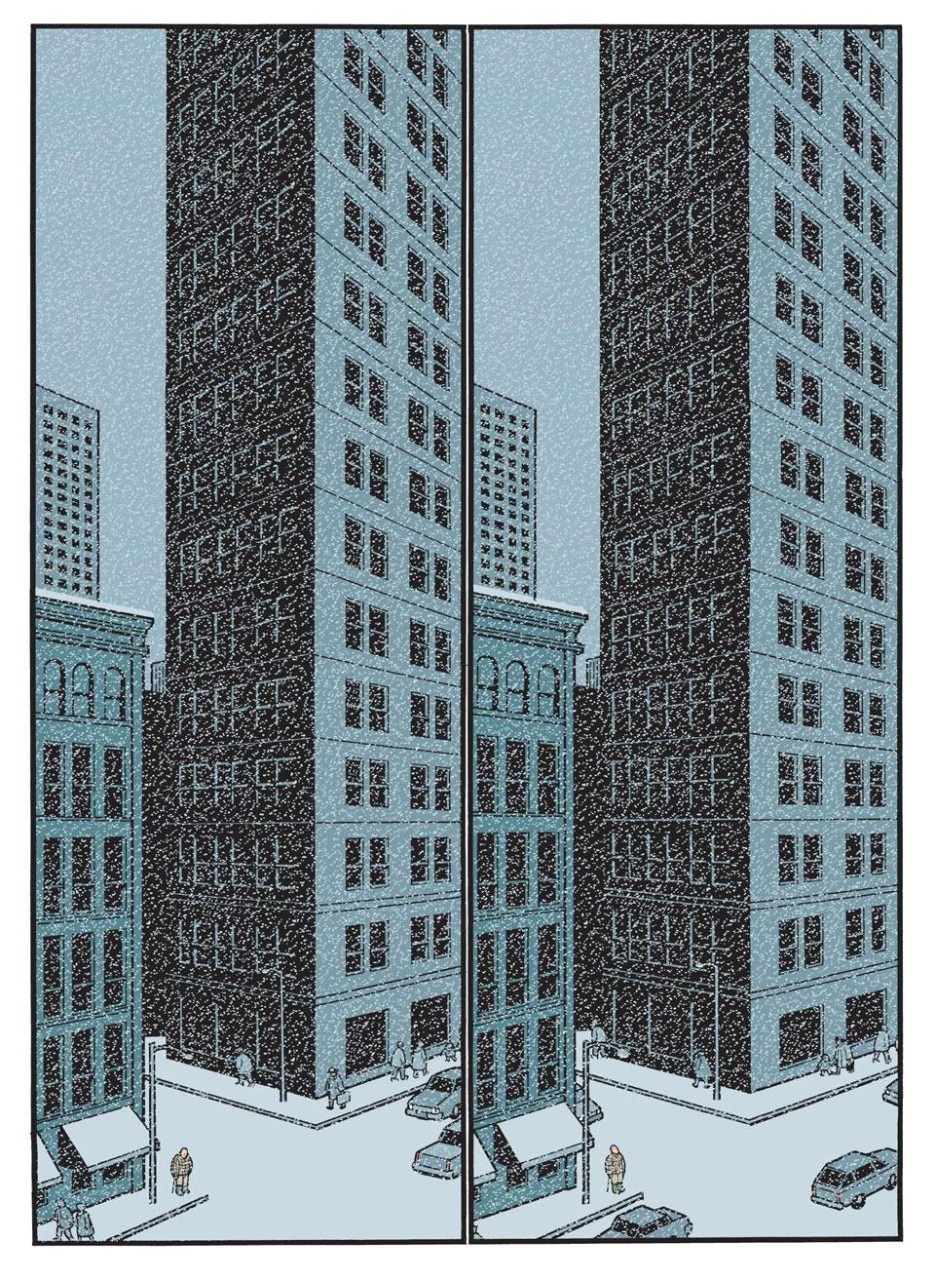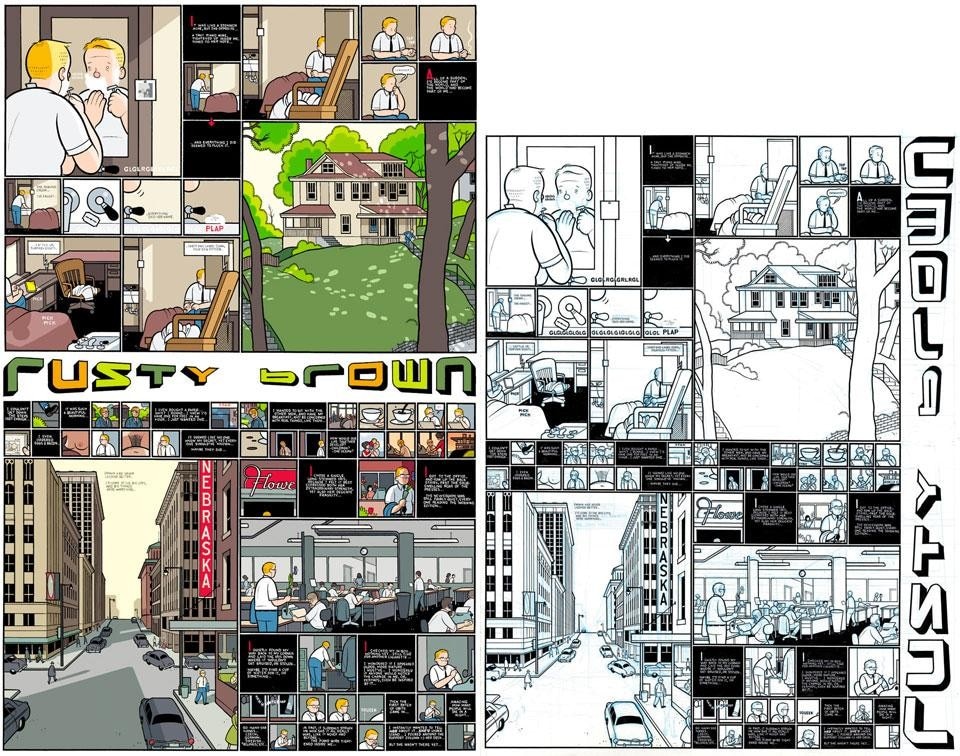Judging by the number of admirers — evident at the opening of a new show at the Parisian Galerie Martel, but also during the days that followed, searching for all manner of ephemera — one would say even his game of hide and seek, through the multiple formats, rarefied publications and every type of linear strategy, ends up reinforcing his image as a cult author. The wonderful Acme Novelty Library, now at issue number 20, no longer manages however to contain all his skills. His knowledge and the culture of the classic comic strip that precedes the crisis of the 1950s have suggested strategies that make him a brilliant illustrator. One need only to look at some of Ware's covers for The New Yorker to comprehend his capacity to domesticate the contemporary. His splendid line, the maniacal obsessiveness of the drawings, contain what seems an inexhaustible talent in terms of screenwriting, layout and even the truly minimal number of characters. From Rusty Brown to Lint and Jimmy Corrigan, Ware's is a picture book of unlimited possibilities, dense and absorbing, addictive like a feuilletton from by-gone times. Chris Ware constrains his work in a straitjacket made up of sophisticated pre-cinematographic iconographies that become even more powerful in the digital age.


The exhibition seems deaf to the beauty of its aesthetic structures yet it is moving, like every tiny trace of handwork on the original drawings

Chris Ware
Galerie Martel
17 rue Martel, Paris



